27 June
1497 – The executions of Thomas Flamank and Michael Joseph (known as Michael an Gof, or Michael the blacksmith), two of the chief commanders of the Cornish rebels, at Tyburn.
1505 – Henry VIII renounced his betrothal to Catherine of Aragon, his brother's widow, claiming that it had been contracted without his consent. It was the day before his 14th birthday, the day on which the marriage was due to be solemnised.
1578 – Death of William Bradbridge, Bishop of Exeter, in poverty at Newton Ferrers. He was buried on the north side of Exeter Cathedral choir. His poverty was due to the deception of his sub-collector of taxes, Henry Borough, who embezzled taxes rather than paying them to the Exchequer.
28 June
1461 – Coronation of Edward IV at Westminster Abbey.
1491 - Birth of Henry VIII, son of Henry VII and Elizabeth of York, at Greenwich Palace.
1497 – Execution of Sir James Tuchet, 7th Baron Audley, by beheading at Tower Hill. Like Flamank and Joseph, who were executed the previous day, he was one of the chief commanders of the Cornish rebels in the 1497 Cornish rebellion. The three commanders were captured after the rebels were beaten at the Battle of Blackheath in London.
1516 – Birth of Charles Blount, 5th Baron Mountjoy, courtier and educational patron. He was born in Tournai to William Blount, 4th Baron Mountjoy, and his third wife, Alice Brown, while his father was governor of Tournai. Mountjoy received an excellent humanist education and was tutored by the likes of Jan van der Cruyce, a friend of Erasmus, and Petrus Vulcanius of Bruges. Scholars such as Erasmus, Juan Luis Vives and John Leland dedicated works to Mountjoy.
1536 – Death of Richard Pace, diplomat, humanist, administrator and Dean of St Paul's, Exeter and Salisbury. He was buried in the church of St Dunstan in Stepney. Pace served Cardinal Wolsey as his Secretary, and was appointed Henry VIII's Personal Secretary in 1516. He was imprisoned for some time in 1528 and 1529 after being critical of the King's desire for an annulment. Pace suffered with ill health from 1522 onwards, which included fits, gastric problems and possible bipolar disorder.
1541 – Execution of Leonard Grey, Viscount Graney and Lord Deputy of Ireland, on Tower Hill. He was executed for treason after being accused of abusing his authority, encouraging attacks on the King's subjects and having Geraldine sympathies.
1557 – Birth of Philip Howard, 13th Earl of Arundel, at Arundel House, the Strand, London. Arundel was the only child of Thomas Howard, 4th Duke of Norfolk, and his first wife, Mary Fitzalan. Howard was married to Anne Dacre, daughter of Thomas Dacre, 4th Lord Dacre of Gilsland, who converted to Catholicism in the 1580s. Her conversion affected her husband, who was imprisoned and fined in 1586 for his faith, among other things. He was tried, attainted and condemned to death in April 1589, but he remained imprisoned in the Tower and died there 15th October 1589, allegedly after being poisoned by his cook.
1558 – Death of Thomas Darcy, 1st Baron Darcy of Chiche, courtier, soldier and administrator, at Wivenhoe. He was buried at St Osyph's Priory. Darcy served as Captain of the Gentlemen Pensioners in the Scottish campaign of 1547, was a member of the Privy Council in 1550 and served as Lord Chamberlain of the Household. He was arrested after he supported Northumberland's bid to put Lady Jane Grey on the throne, but was pardoned in November 1553.
1598 – Death of Abraham Ortelius, map maker, at Antwerp. He was buried in Antwerp's church of St Michael. Ortelius is known as the creator of the first modern atlas, the Theatrum Orbis Terrarum (Theatre of the World), which was published in 1570.
1603 – Death of Sampson Erdeswick, Catholic recusant and antiquary, at Sandon in Staffordshire. He was buried in the local church. Erdeswick claimed to be the real author of “The True Use of Armorie”, which had been published in 1592 under the name of William Wyrley, his assistant. His “A Survey of Staffordshire” was published after his death.
1621 – Death of Sir Richard Bulkeley, landowner and courtier, at Hen Blas, Beaumaris, Anglesey. He was buried at Beaumaris Church. Bulkeley owned lands in Anglesey and Cheshire.
29 June
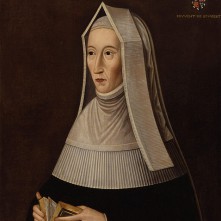
Lady Margaret Beaufort
1509 - Lady Margaret Beaufort, grandmother of Henry VIII and the matriarch of the Tudor dynasty, died on this day in 1509 at Cheyneygates, the Abbot of Westminster's house. Click here to find out more about Margaret.
1536 – Thomas Boleyn, Earl of Wiltshire, was stripped of his office of Lord Privy Seal. Cromwell succeeded him and was formally appointed 2nd July 1536. Wiltshire had held the office since January 1530.
1537 – Death of Henry Algernon Percy, 6th Earl of Northumberland. He was buried at Hackney parish church, and his will appointed the King as Supervisor and Edward Fox, Bishop of Hereford, and Thomas Cromwell as executors.
Percy is known for his romance with Anne Boleyn when he was part of Cardinal Wolsey's household and she was serving Catherine of Aragon. The romance was broken up by Wolsey and Percy's father, and he was forced to marry Mary Talbot. Percy served Henry VIII as warden of the east and middle marches, and was one of the peers appointed to judge George and Anne Boleyn in May 1536. He collapsed after Anne's death sentence was pronounced, and his illness prevented him from taking an active role on the Pilgrimage of Grace, which may have been fortunate, since his brothers, Thomas and Ingram, were arrested for their involvement, and Thomas was executed.
1537 – Execution of John Hussey, Baron Hussey and Chief Butler of England, by beheading at Lincoln after he was accused of conspiring with Lord Darcy during the Pilgrimage of Grace.
1540 – Bill of attainder passed against Thomas Cromwell for the crimes of corruption, heresy and treason, stripping him of his honours and condemning him to death.
1541 – Hanging of Thomas Fiennes, 9th Baron Dacre, at Tyburn. He was hanged after he and his companions murdered a servant of Nicholas Pelham while poaching on Pelham's estate in April 1541. He was buried in the church of St Selpulchre.
1552 – Birth of Elizabeth Carew (née Spencer), Lady Hunsdon, literary patron, at Althorp, Northamptonshire. Elizabeth was the sixth child of Sir John Spencer of Wormleighton and Althorp, and his wife, Katherine. Elizabeth was married first to Sir George Carey, 2nd Baron Hunsdon and grandson of Mary Boleyn, and then, after his death, to Ralph Eure, 3rd Baron Eure. Edmund Spenser's “The Faerie Queene” was addressed to “the most vertuous, and beautifull Lady, the Lady Carew” and men such as Thomas Churchyard, Thomas Nashe, Abraham Fleming, Thomas Playfere, Henry Lok and John Dowland also dedicated works to her.
1613 – The Globe Theatre burned to the ground after catching fire during a performance of Shakespeare's “Henry VIII”. Sparks from a cannon fired during the play ignited the thatched roof.
30 June
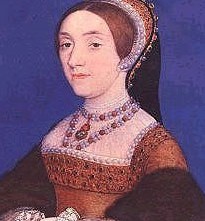
Catherine Howard
1537 – Execution of Thomas Darcy, Baron Darcy of Darcy. He was beheaded on Tower Hill after being found guilty of treason for his part in the Pilgrimage of Grace and Bigod's Revolt.
1541 - Henry VIII and his fifth wife, Catherine Howard, set off on their royal progress to the North, the aim being to meet Henry’s nephew, King James V of Scotland, at York in September and also “to emphasise the extent of his defeat of the Pilgrims [from the Pilgrimage of Grace] and the Percy interest, and to humiliate utterly all but the most clearly loyal elements”. Click here for my Claire Chats video on the progress.
1559 - Henry II of France suffered a mortal head wound while jousting at the Place Royale at the Hôtel des Tournelles against Gabriel Montgomery, Captain of the King's Scottish Guard. The joust was held to celebrate the Peace of Cateau-Cambrésis. The King died 10th July and was succeeded by Francis II.
1567 – Death of Thomas Becon, clergyman, reformer and theologian. Becon acted as chaplain to Edward Seymour, Lord Protector, and Archbishop Thomas Cranmer, and was appointed by Cranmer as one of the six preachers at Canterbury. Becon was imprisoned in the Tower of London from August 1553 to March 1554, during Mary I's reign, due to his religious beliefs, and on release went into exile in Strasbourg, Frankfurt and Marburg. He returned to England on Elizabeth I's accession. Becon wrote many theological works, which, in time, changed from Lutheran to Zwinglian in their theology. It is thought that he was buried somewhere in Canterbury.
1590 – Death of Sir Roger Townshend, member of Parliament and courtier in Elizabeth I's reign, at Stoke Newington in Middlesex. He was buried at St Giles Cripplegate. Townshend began his career serving the Howard family and was knighted by Charles Howard, Baron Howard of Effingham and the Lord Admiral, at sea for his part in defeating the Spanish Armada in 1588.
1 July
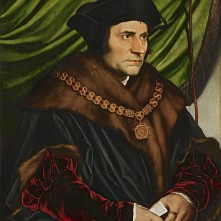
Thomas More
1511 – Birth of Hadrianus Junius (Adriaen de Jonghe), physician, scholar, poet and historian, at Hoorn in the Netherlands. His contemporaries dubbed him as a “second Erasmus” and his works included “Philippeis” (1554), a poem celebrating the marriage of Mary I and Phlip II of Spain, and “The Batavia”, which was the first history of Holland.
1535 – The trial of Sir Thomas More began. He was tried by a special commission of oyer and terminer, and found guilty under the 1534 Treason Act for “traitorously attempting to deprive the King of his title of Supreme Head of the Church”. He was condemned to death, to be executed at Tyburn, though his sentence was commuted to beheading. More was beheaded on 6th July 1535, on Tower Hill.
1536 – Parliament declared that Henry VIII’s two daughters, Mary and Elizabeth, were illegitimate. This meant that the King had no legitimate children, just three bastards, so the pressure was now on the King’s new wife, his third wife Jane Seymour, to provide a legitimate heir, and preferably a male one.
1543 - The Treaties of Greenwich were signed. In these treaties between England and Scotland, it was agreed that Prince Edward, the future Edward VI, would marry Mary, Queen of Scots.
1555 – Execution of John Bradford, evangelical preacher and martyr, at Smithfield. Bradford was burned at the stake after being condemned as a heretic. He was influenced by his friend, Martin Bucer.
1572 – Death of John Clement, physician, in exile in Louvain. He was buried near the high altar of the cathedral church of St Rumbold. Clement started his career as tutor to Thomas More's children before moving into the service of Cardinal Wolsey, who sent him to be educated at Corpus Christi College, Oxford. He also studied medicine at Louvain and in Italy. On his return to England, he joined More's household and married More's adopted daughter, Margaret Giggs, before becoming a Court Physician. Clement was imprisoned in the Tower of London in 1535, along with More, for refusing to take the “Oath of Supremacy”. He was eventually released, and in 1544 became President of the College of Physicians. Clement was forced into exile in the reign of the Protestant Edward VI and Elizabeth I.
1582 – Death of John Harington, courtier, scholar and poet, at Stepney, London. He was buried beside his second wife, Isabell, in the church of St Gregory by Paul, London. Some of his poems can be found in the 1557 “Tottel's Songes and Sonettes”. Harington served Henry VIII and Sir Thomas Seymour, and was close enough to Elizabeth I for her to stand as godmother to his son, John, in 1560.
1591 – Execution of Catholic priest and martyr George Beesley in Fleet Street London. He was hanged, drawn and quartered with Montford Scott, another Catholic priest. He was condemned to death by the statute which made being a Catholic missionary priest treason in the reign of Elizabeth I. While he was imprisoned in the Martin Tower at the Tower of London, Beesley carved his name on the wall of his cell, an inscription which can still be seen today.
1614 – Death of Isaac Casaubon, classical scholar and ecclesiastical historian, in Drury Lane, London. He was buried in Westminster Abbey. His first major work was a commentary on the work of Strabo, the Greek geographer.
1622 – Death of William Parker, 13th Baron Morley and the man who discovered the Gunpowder Plot. He died in his Essex home at Great Hallingbury.
2 July
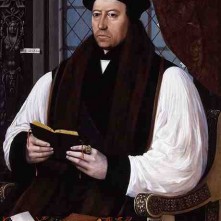
Thomas Cranmer
1489 - Archbishop Thomas Cranmer was born in Aslockton, Nottinghamshire, England. He was the son of Thomas Cranmer, and his wife Agnes (nee Hatfield). He served Henry VIII and Edward VI as Archbishop of Canterbury but was burnt at the stake for heresy by Mary I on 21 March 1556.
1497 – Death of Sir William Haute, composer and cousin of Elizabeth Woodville. Haute was Sheriff of Kent at various times, as well as a Justice of the Peace and Commissioner. According to his biographer, Peter Fleming, he was also a patron of musicians, and a composer, composing carols and “polyphonic settings of the Benedicamus domino”.
1536 – Thomas Cromwell formally appointed Lord Privy Seal in Thomas Boleyn's place.
1540 – Henry Fitzalan, the future 12th Earl of Arundel, appointed Deputy of Calais, replacing Arthur Plantagenet, Viscount Lisle.
1557 – Baptism of Philip Howard, 13th Earl of Arundel, son of Thomas Howard, 4th Duke of Norfolk, and his wife Mary (née Fitzalan). He was baptised in the Chapel Royal at Whitehall Palace with Philip of Spain and Nicholas Heath, Archbishop of York, standing as godfathers and Elizabeth Howard, dowager Duchess of Norfolk, standing as godmother.
1594 – Burial of Robert Scarlett (Old Scarlett), sexton at Peterborough Cathedral. A verse accompanying his portrait in the cathedral states that he buried Catherine of Aragon and Mary, Queen of Scots at the cathedral, but it is not known whether this is true.
1610 – Burial of Richard Knolles, historian and translator, at St Mary's Church, Sandwich. His works include “The Generall Historie of the Turkes” (1603), The “Six Bookes of a Commonweale” (1606), which was a translation of Jean Bodin's “La république”, and a translation of Camden's “Britannia”, which was not published.
3 July
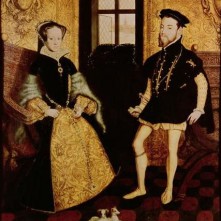
Mary I and Philip of Spain
1495 – The pretender Perkin Warbeck landed at Deal in Kent with men and ships. Around 150 of his men were killed and over 160 captured by Henry VII's troops. Warbeck escaped, fleeing to Ireland. Warbeck claimed to be Richard, Duke of York, the younger of the Princes in the Tower.
1533 - William Blount, 4th Baron Mountjoy, Catherine of Aragon's Chamberlain, was ordered to inform Catherine again that she must recognise her new title of 'Princess Dowager' and not use the title of 'Queen'. Catherine refused, and whenever she saw her new title written in letters, she crossed it out with a pen.
1541 – Death of Girolamo Ghinucci, Italian papal administrator, Bishop of Worcester, papal nuncio and ambassador. He died in Rome and was buried in the church of San Clemente.
1557 – Mary I bid farewell to her husband, Philip of Spain, at Dover as he set off for war with France.
1579 – Death of Sir Edward Fitton, administrator and Vice-Treasurer for Elizabeth I in Ireland. His death was recorded as being ‘from the disease of the country’, which he had apparently caught on an expedition to Longford. He was buried in St Patrick's Cathedral, Dublin, beside his wife, Anne.
1594 (3rd or 4th July) – Executions of Catholic priest John Cornelius, Thomas Bosgrave (a relation of Sir John Arundell) and two servants of the Arundell family at Dorchester. They had been arrested when Cornelius was found hiding in a priest hole at Chideock Castle on 14th April 1594.


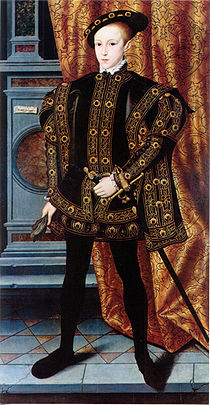
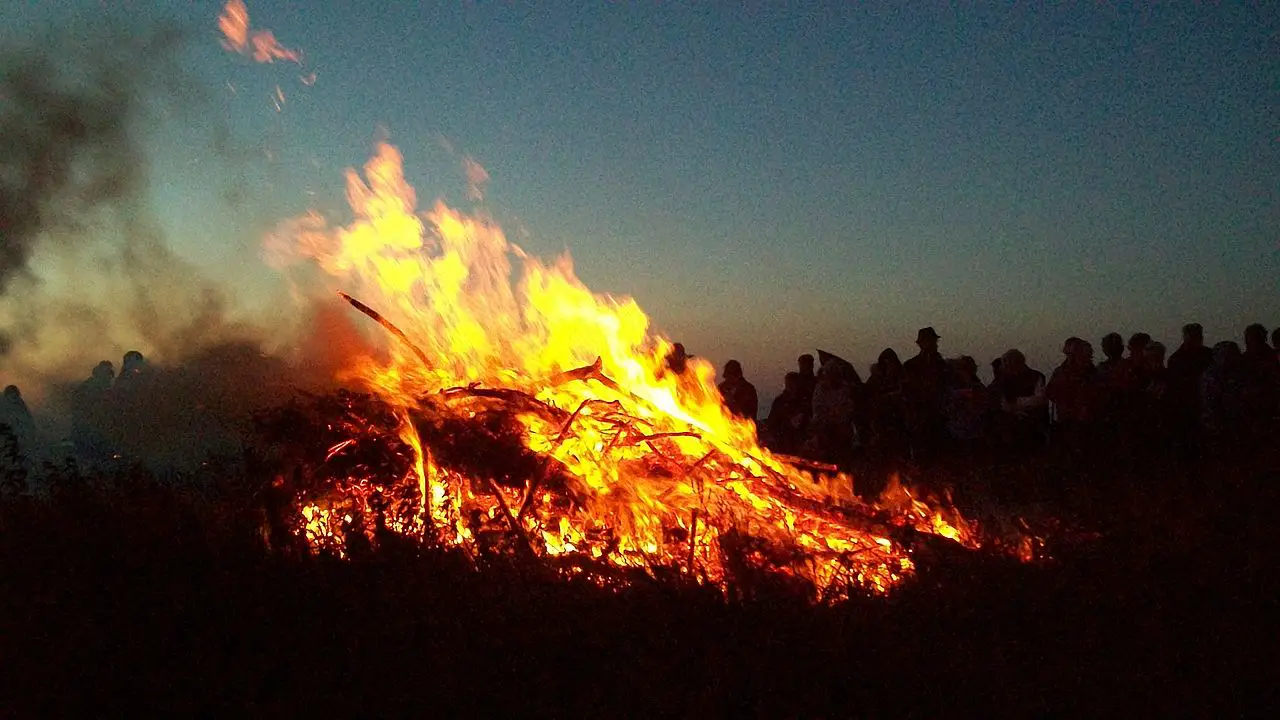
Leave a Reply